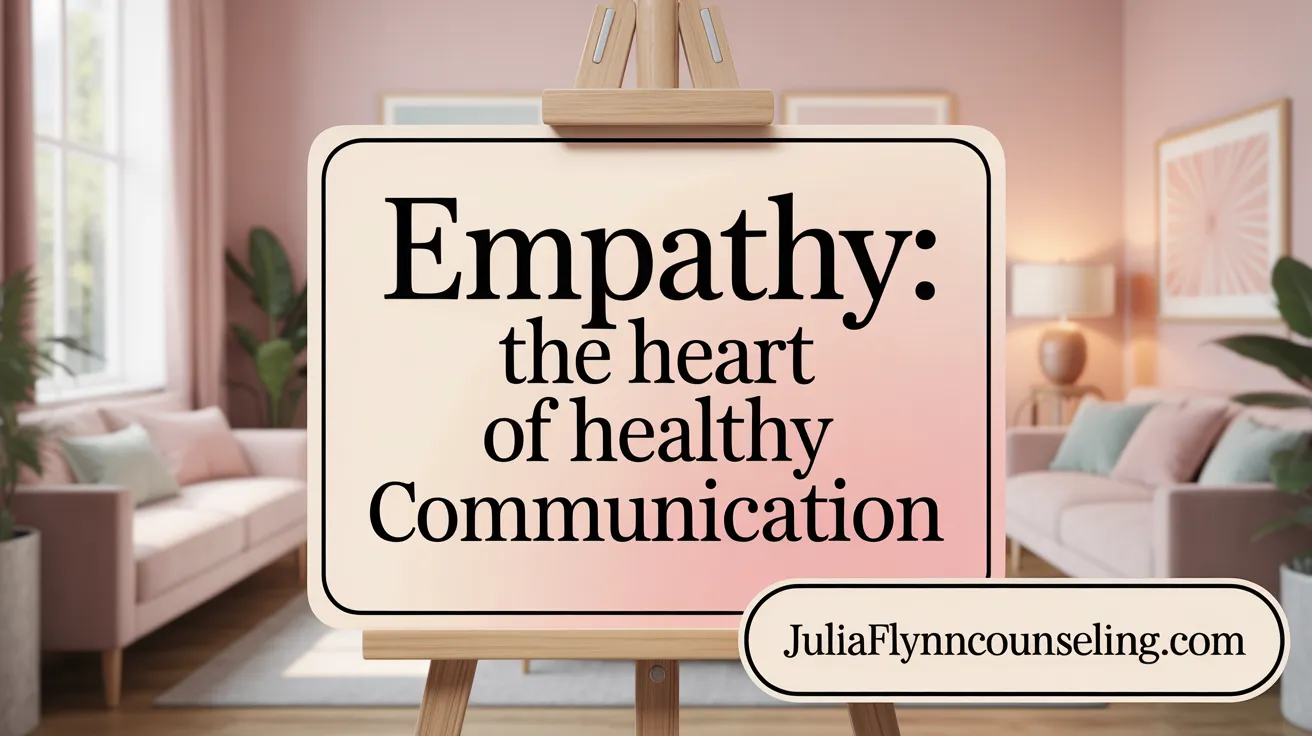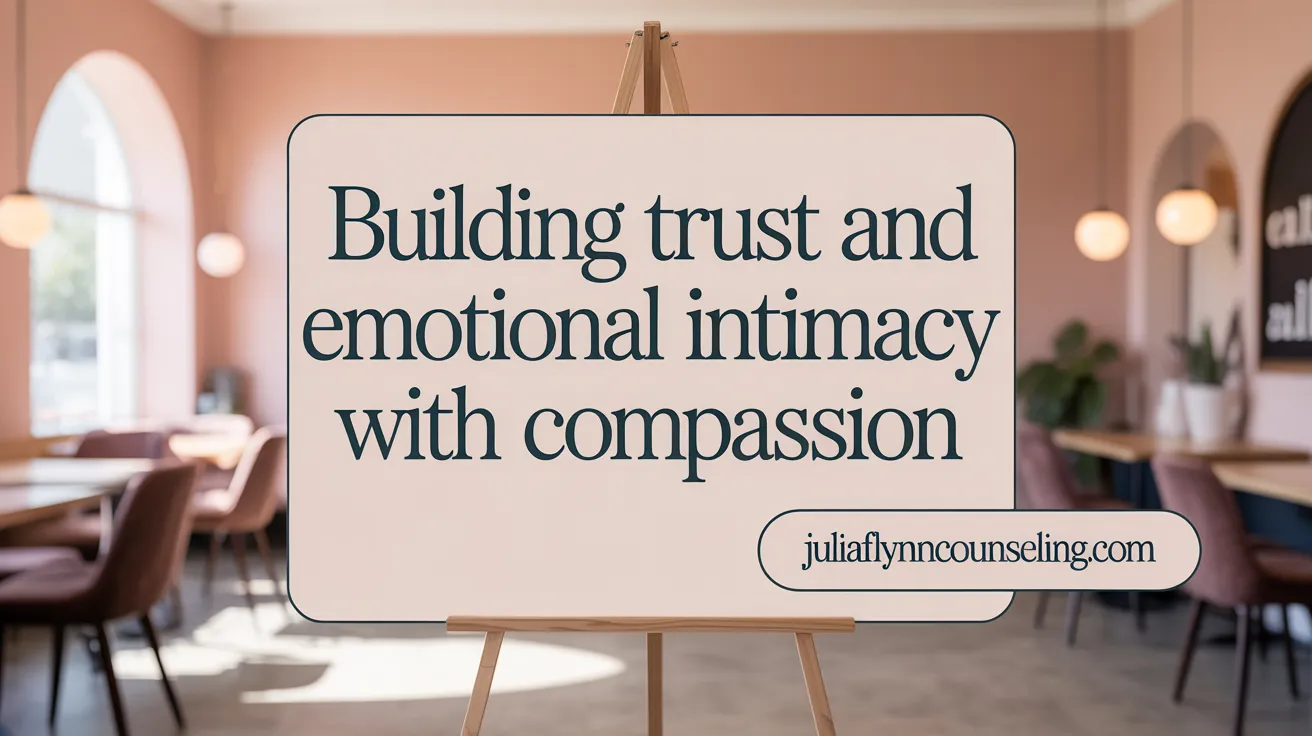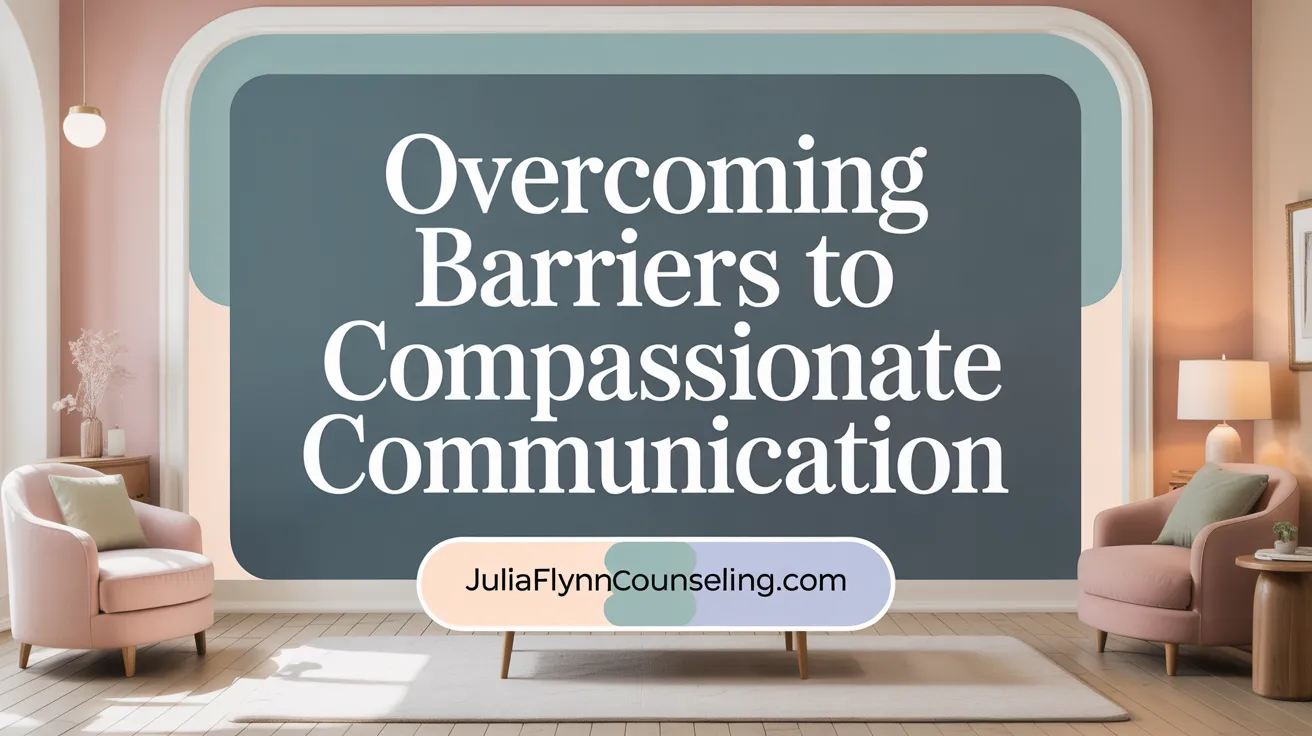Unlocking Deeper Connections Through Compassionate Dialogue
Compassionate communication stands at the heart of thriving relationships, fostering empathy, understanding, and genuine connection. Rooted in respect and kindness, it offers a transformative approach to how partners interact, promoting emotional intimacy and resilience. This article explores how compassionate communication bolsters relationship quality, drawing on the principles of nonviolent communication, empathy, and practical techniques for couples and broader relational contexts.
Foundations of Compassionate Communication in Relationships
What is compassionate communication and how does it differ from corrosive communication?
Compassionate communication is a form of interaction grounded in empathy, understanding, and respect. It focuses on expressing feelings and needs in ways that promote mutual benefit rather than trying to win arguments. This approach nurtures connection and trust by encouraging dialogue free from blame or judgment. In contrast, corrosive communication uses harmful language, including emotional abuse or verbal attacks, which can damage relationships. Such communication obstructs trust, fuels conflict, and prevents genuine understanding between partners. Learn more about the importance of understanding and empathy and the harms of corrosive communication and emotional abuse.
What is the role of empathy in compassionate communication?
Empathy lies at the heart of compassionate communication. It involves the ability to understand and share the emotions of another person, creating an emotional bond that fosters trust and meaningful connection. Empathetic communication helps in recognizing the underlying needs and feelings behind a person’s expressions, reducing misunderstandings and easing conflict. By truly tuning into each other's perspectives, partners build supportive environments where openness and vulnerability are welcomed. For further reading on empathic communication and building trust through empathy and importance of empathy in effective communication.
How does Nonviolent Communication (NVC) support compassionate communication?
Nonviolent Communication, developed by Marshall Rosenberg, provides a clear framework to practice compassionate communication effectively. It is structured around four steps: observing without judgment; identifying and naming feelings; connecting emotions to underlying needs; and making specific, respectful requests. This method encourages individuals to express themselves authentically without blaming, while fostering mutual understanding. Through NVC, partners learn to navigate conflicts thoughtfully and deepen emotional intimacy by addressing core human needs with compassion and clarity. Explore Nonviolent Communication principles and practices, NVC for intimate relationships, and an introductory guide to NVC.
Empathy as the Cornerstone of Healthy Communication

Defining empathy in communication
Empathy in communication is the ability to understand and share another person's feelings and experiences from their perspective. This involves not just hearing words but attuning to emotions and values, which creates a genuine connection and mutual respect. For more on Empathic Communication and Understanding Others' Thoughts and Emotions, see related resources.
How empathy fosters trust and connection
Empathy allows partners and communicators to feel truly heard and valued. When emotions and perspectives are validated without judgment, it fosters a sense of safety and emotional intimacy. This validation reduces defensiveness and encourages openness, forming the foundation for deep trust and lasting connection. See Importance of Empathy in Communication and Compassionate Communication in Relationships for more insights.
Practical ways to demonstrate empathy
Effective demonstration of empathy includes active listening without interruption, acknowledging the speaker's feelings, and validating their experience. Asking open-ended questions encourages deeper sharing, while compassionate responses show understanding. Non-verbal cues such as maintaining eye contact, open body language, and gentle tone strengthen emotional attunement. For practical strategies, see Tips for Compassionate Communication and Effective Communication in Relationships.
Empathy’s role in conflict resolution and everyday interactions
In conflicts, empathy helps identify underlying needs and motivations, shifting focus from blame to understanding. It encourages cooperative problem-solving and reduces hostility. On a daily basis, empathetic communication nurtures positive interactions by making others feel seen and respected, which strengthens relationships and fosters harmony. See Effective Conflict Resolution and Building Trust and Compassionate Communication and Conflict Reduction for more on these themes.
Key Techniques for Practicing Compassionate Communication

What communication techniques support compassionate dialogue?
Effective compassionate communication relies on several interrelated techniques. Active listening requires full attentiveness and thoughtful responses to the other person's message, ensuring they feel truly heard. The LARA method enhances this process by guiding interactions to Listen carefully, Affirm the speaker's feelings or experiences, Respond thoughtfully, and Add one's own perspective constructively. Using 'I' statements allows individuals to express personal feelings and needs clearly without assigning blame, which reduces defensiveness and fosters openness. Soft start-ups—gently initiating conversations rather than immediately addressing issues harshly—help lower tensions and set a collaborative tone (Enhancing the Quality of Our Relationships). Managing emotional triggers through mindfulness or pausing before responding further prevents escalation (Compassionate communication techniques).
How do non-verbal cues influence compassionate communication?
Non-verbal communication plays a powerful role in conveying empathy and understanding. Facial expressions, eye contact, body posture, and tone of voice can either reinforce or undermine verbal messages. Open and relaxed body language, such as nodding and maintaining appropriate eye contact, signals attentiveness and warmth (Effective communication in relationships). Observing these cues in others helps recognize unspoken feelings, allowing for more compassionate and accurate responses (Compassionate Communication in Relationships). When communicators validate these non-verbal signals, it supports emotional connection and deepens mutual understanding (Healthy relationships through communication).
What role does daily self-reflection and humility have?
Daily self-reflection encourages individuals to examine their own behaviors, emotions, and motivations, fostering humility and openness to growth (Daily Self-Reflection for Personal Growth). This practice enhances self-awareness, which is crucial for compassionate communication because it enables individuals to manage reactions and approach interactions with empathy rather than judgment (7 Skills to Improve the Quality of Your Relationships). Cultivating humility helps reduce the need to 'win' conversations or impose one’s perspective, balancing the dialogue toward understanding and respect (How Do We Practice Compassionate Communication?).
| Technique | Description | Impact on Communication |
|---|---|---|
| Active Listening | Fully attending and thoughtfully responding | Builds trust and shows respect |
| LARA Method | Listen, Affirm, Respond, Add | Encourages mutual understanding |
| 'I' Statements | Expresses own feelings without blaming | Reduces defensiveness and conflict |
| Soft Start-ups | Initiate conversations gently | Prevents escalation and invites cooperation |
| Non-verbal Cues | Facial expressions, body language, tone | Enhances emotional connection and validation |
| Daily Self-Reflection | Mindful examination of personal reactions | Fosters humility, self-awareness, empathy |
Building Emotional Intimacy and Trust Through Compassion

How does compassionate communication foster emotional intimacy?
Compassionate communication fosters emotional intimacy by encouraging vulnerability and authentic self-expression. When partners communicate with empathy and understanding, they create safe spaces where each feels accepted and deeply understood. This openness allows both individuals to share their true feelings and needs without fear of judgment.
Key to this process is self-awareness, where individuals recognize and express their emotions clearly, using tools like "I statements" to communicate personal experiences effectively. This honest sharing deepens trust and leads to stronger emotional bonds.
Consistent presence and active empathy also play vital roles. Being reliably available, attentive, and responsive shows commitment and care, reinforcing a partner's sense of security in the relationship.
Expressing appreciation and gratitude regularly nurtures positive feelings and mutual respect, further solidifying connection.
How does managing conflict with compassion improve relationship quality?
Managing conflict with kindness and patience transforms disagreements into opportunities for growth. Compassionate communication techniques—such as listening without judgment, avoiding blame, and seeking to understand underlying needs—reduce defensiveness and emotional escalation.
Patience allows partners to process emotions calmly, while kindness promotes goodwill even during tough conversations. Using approaches like the LARA method (Listen, Affirm, Respond, Add) helps maintain constructive dialogue and prevents silent treatment or aggressive responses.
By focusing on resolving issues instead of winning arguments, couples strengthen their emotional ties and foster resilience.
Consistent Presence and Reliability
Being consistently present demonstrates reliability, care, and intentionality. It builds a foundation of trust where partners feel safe expressing themselves freely.
Expressing Appreciation and Gratitude
Regularly sharing gratitude and affirmations nurtures mutual respect and positivity, essential for sustaining intimacy.
Managing Conflicts with Kindness and Patience
Approaching conflicts with a compassionate mindset encourages understanding, reduces hostility, and supports healthy resolution.
| Aspects | Description | Benefits |
|---|---|---|
| Vulnerability & Self-Awareness | Sharing authentic feelings openly | Deepens trust and emotional connection |
| Consistent Presence | Reliable availability and empathy | Builds security and mutual care |
| Appreciation & Gratitude | Frequent affirmations and positive feedback | Enhances respect and relationship satisfaction |
| Compassionate Conflict Management | Kind, patient approach using empathetic communication | Reduces defensiveness and strengthens bonds |
The Science and Benefits of Compassionate Communication
What are the health benefits of compassionate communication in relationships?
Compassionate communication plays a crucial role in fostering strong, healthy relationships that contribute significantly to both physical and mental health. Research indicates that individuals in supportive, compassionate relationships have a 50% greater likelihood of survival compared to those without such connections. This advantage is largely due to the positive effects compassionate communication has on physiological stress responses.
For example, it helps reduce elevated cortisol levels, inflammation, and harmful cardiovascular reactivity—all factors linked to chronic stress and disease. Moreover, compassionate exchanges reduce feelings of anxiety and foster emotional well-being, supporting overall health longevity (Healthy relationships through communication, Compassionate Communication in Relationships, Compassionate communication a game-changer for improving healthcare outcomes).
What does research say about the relationship between compassionate communication and relationship satisfaction?
Studies consistently show that empathetic and compassionate communication enhances relationship satisfaction by promoting mutual appreciation, trust, and supportive interactions. These positive communication patterns strengthen emotional bonds and improve intimacy.
Couples who communicate with empathy and kindness are better able to resolve conflicts constructively and maintain closeness. This rich connection, in turn, elevates their overall quality of life and long-term commitment (Effective communication in relationships, Communication exercises for couples, Unlocking intimacy through effective couples communication).
Together, the physical and emotional benefits underscore the vital role that compassionate communication plays in cultivating healthy, lasting relationships that support wellbeing and longevity (The power of compassionate communication, Why is communication important).
Practical Exercises and Daily Practices to Cultivate Compassion

What daily practices help cultivate compassionate communication?
Cultivating compassionate communication daily strengthens empathy and connection in relationships. One effective practice is journaling gratitude and appreciation. This habit encourages partners to reflect on what they value in each other, fostering positive feelings that underpin compassionate interactions.
Regular relationship check-ins, often called 'Bae Sesh', involve setting aside dedicated time—about 30 minutes—to share appreciation, plan enjoyable activities, and discuss challenges together. These check-ins maintain emotional closeness and provide a safe space for honest communication.
Asking open-ended questions invites partners to explore their thoughts and feelings more deeply, promoting understanding and reducing assumptions. This technique encourages open dialogue and helps partners articulate their needs effectively (Effective communication in relationships.
Sharing personal stories and light humor can ease tension in conversations and make communication more approachable. Humor and relatable experiences promote joy and engagement, helping partners connect on a more authentic level (Cultivating Compassion through Effective Communication.
Setting communication ground rules is vital for respectful exchanges. Techniques like the Speaker-Listener method, which involves turn-taking, paraphrasing, and avoiding problem-solving during initial discussions, help manage conflicts calmly. Implementing time-outs during escalation prevents emotional overload and facilitates clearer thinking (Communication Skills for building Strong relationships).
Together, these daily exercises build a compassionate communication style that nurtures trust, reduces conflict, and strengthens the emotional bond between partners (Compassionate Communication in Relationships.
Compassionate Communication Beyond Intimate Relationships
How is compassionate communication applied in healthcare?
In healthcare, compassionate communication is vital for building trust and improving patient outcomes. It involves actively listening to patients, carefully observing verbal and nonverbal cues such as facial expressions and body language, and responding with empathy and understanding. This form of communication helps patients feel genuinely cared for and heard, which leads to greater satisfaction and adherence to treatment plans. It also reduces misunderstandings that can result in malpractice claims. Healthcare professionals receive training in compassionate communication through innovative programs that use role-playing, arts, and reflective practice to enhance their skills. The end result is stronger patient–clinician relationships, improved safety, and lower healthcare costs. For more details, see How Compassionate Communication Improves Patient Care and Compassionate Communication Program Outcomes.
What role does compassionate communication play in workplaces?
Compassionate communication in the workplace creates inclusive and supportive environments. Employees and leaders who practice empathetic listening validate the emotions and perspectives of their colleagues, fostering psychological safety and trust. Effective empathic communication leads to better teamwork, increased motivation, and higher organizational performance. Leaders who demonstrate empathy are able to understand team challenges and respond with care, helping to build morale and reduce burnout. This approach encourages open dialogue, reduces conflict, and nurtures respectful relationships. Learn more from What Is Empathic Communication? and 4 Ways to Communicate with More Empathy.
Building compassion in workplace relationships
Compassionate communication techniques such as mindful listening, avoiding judgment, and offering positive choices promote mutual respect and cooperation among colleagues. Training programs integrate self-awareness and empathy development, enhancing interpersonal skills and emotional intelligence. These practices contribute to healthier work cultures where employees feel valued and supported. For additional insights, consult Compassionate Communication 101 and Is Empathy in Communication the Key to Building Strong Relationships?.
Community and social relationships
Beyond professional and healthcare settings, compassionate communication strengthens community ties by fostering understanding across diverse perspectives. It encourages active listening, sharing personal stories, and acknowledging shared values like kindness and justice. This helps build trust and cooperation in social groups, creating a foundation for more compassionate and connected communities. Explore these ideas further at Practices Cultivating Compassionate Communication Skills and Compassionate Communication in Relationships.
Together, these applications illustrate that compassionate communication is a powerful tool not only for intimate relationships but also for improving interactions and outcomes across multiple social contexts.
Overcoming Barriers and Sustaining Compassionate Communication

How can individuals overcome barriers to compassionate communication?
Interpersonal communication often encounters emotional triggers that spark reactive, defensive behaviors. To overcome these barriers, individuals can employ techniques like the S.T.O.P. method, which stands for Stop, Take a breath, Observe, and Proceed. This process interrupts automatic reactive patterns, offering a pause for mindful reflection before responding.
Mindfulness enhances this approach by fostering a present-moment awareness that reduces impulsive defensiveness. Becoming self-aware helps in recognizing when emotional triggers arise and managing them thoughtfully rather than reacting emotionally, as discussed in compassionate communication practices and mindful listening techniques.
Additionally, addressing judgment and defensiveness is critical because these behavior patterns breed mistrust and breakdown communication. By consciously avoiding judgmental attitudes and instead practicing empathy and respectful acknowledgment, individuals can build openness and strengthen connections, which aligns with principles found in nonviolent communication and compassionate communication techniques.
Why is ongoing training and self-compassion important?
Compassionate communication is a skill that benefits greatly from continued training and deliberate practice. Educational programs and workshops reinforce techniques and promote sustained habit formation, as highlighted by the Sanford Compassionate Communication Academy and programs in compassionate communication at OHSU.
Self-compassion also plays a vital role by enhancing emotional resilience. When individuals treat themselves with kindness and patience, they can engage empathetically with others without exhaustion or burnout, thus maintaining healthier, more supportive relationships over time. This is supported by research on compassionate communication and emotional resilience.
Together, mindfulness, training, and self-compassion form a foundation that supports overcoming communication barriers and fosters lasting, compassionate connections, following the guidance found in compassionate communication principles and effective compassionate communication techniques.
The Path Forward: Compassion as the Heart of Lasting Relationships
Compassionate communication is more than a tool—it's the foundation for transforming relationships into safe, nurturing, and fulfilling connections. By embracing empathy, active listening, and respect for each other's needs, individuals can deepen intimacy, resolve conflicts constructively, and foster enduring trust. Integrating daily practices, mindful attention, and ongoing learning empowers partners to create resilient bonds that enhance emotional and physical well-being. Whether at home, work, or community, cultivating compassion in how we communicate opens the door to richer, more meaningful human connections.
